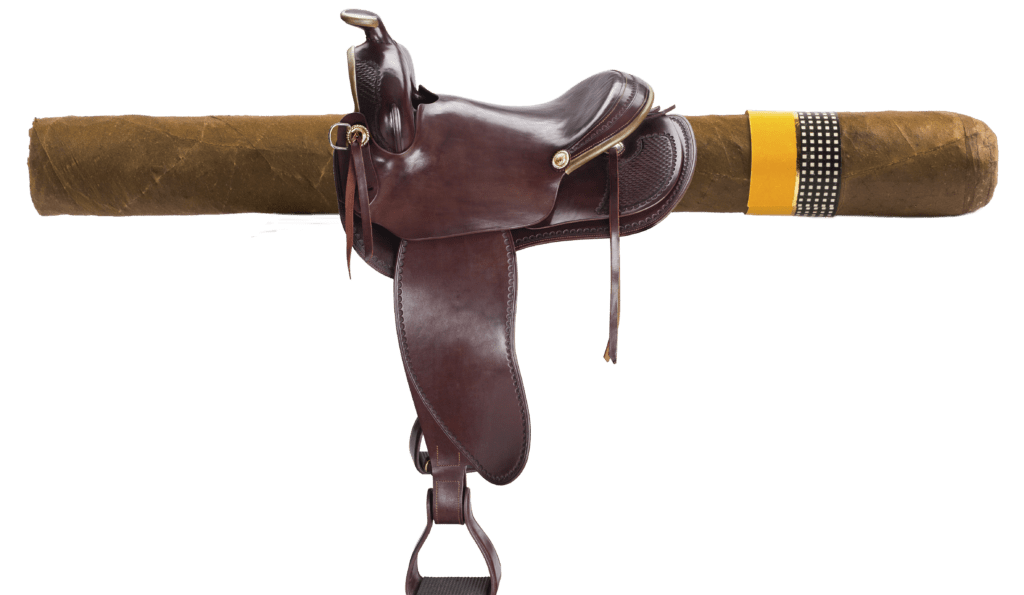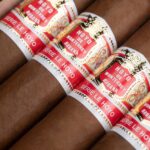
Where does the barnyard flavor in cigars come from?
Some flavors in cigars and wine are decidedly “horsey”. Like them or not, they may be caused by a lack of hygiene. So, you don’t want too much.
By Bernard Burtshy
Cohiba’s magnificent Esplendidos is a stunning creation. With its elegant, glossy colorado wrapper, it’s as sophisticated as an Italian supercar. The cold draw reveals spices, gamey scents and even barnyard. Wait, what? Of course, these hints of sweaty saddle are coated in notes of musk, tar and spices, but they’re always lurking in the background, to the delight of some and the disgust of others. You either love it or you hate it.
These same notes of barnyard can be found in famous, expensive wines. The famed American wine critic, Robert Parker, enjoyed this type of scent, awarding wines like the celebrated Château Montrose 1990 his highest score of 100 out of 100. Nowadays, they sell for a fortune at auctions. But where does this aroma come from?
For many years, wine makers attributed these barnyard aromas to the “terroir”, an overused term that serves to excuse all faults. A terroir like Les Renardes, in the Corton grand cru in Burgundy, is often cited as an example of this hypothesis. Indeed, in the 1970s, the English critic, Anthony Hanson, had no hesitation in writing: “Great burgundy smells of s**t.” In cigars, these aromas are unique to, and characteristic of, a few cigars produced by a few brands, which have their fans.
Yeast contamination
It wasn’t until the 1990s that Pascal Chatonnet – one of the great contemporary consultants – proved in his PhD thesis that the underlying cause was yeast contamination. A significant number of barrels were tainted by Brettanomyces bruxellensis, often abbreviated to “Brett”. This strain, named for the Brussels region where it was first identified in spontaneous fermentation – in breweries like the famous Cantillon Brewery, founded on the banks of the Senne and on the Willebroeck canal – affects all winemakers, old- and new-world alike.
The popular aromas that Brett produces are a subtle blend of several molecules; 4-ethyl-phenol, which gives the aforementioned barnyard smell; 4-ehyl-gaiacol, which creates a scent of clover; and finally, 4-ethyl-catechol, for the odor of smoke and camphor. These molecules are only perceptible above a certain level (500 µg/l for the former, 100 µg/l for the latter). Beneath this level, they simply contribute the wine’s complexity. As Georges Clemenceau once said: “Politics, is like andouillette, it has to smell of s**t…, but not too much.” The same is true of wine and cigars: it should smell a little, but in moderation.
Moreover, the perception (or detection) thresholds vary widely between individuals; even for the tasting professionals responsible for finding these so-called “phenol flaws”. One must also distinguish between the perception threshold and the rejection threshold, at which point a flaw becomes intolerable. Generally speaking, younger generations are far more sensitive, and often more intolerant, than older generations, which does not help to bridge the inter-generational gap.
Cohiba’s third fermentation
Pascal Chatonnet’s detailed work first accused poor hygiene during fermentation. Whether it be in wine cellars or tobacco curing barns, hygiene has not always been a priority. Indeed, as hygiene standards have improved, the famous notes of “terroir” have largely disappeared, in wine at least.
As far as wine goes, beyond the impact of poor hygiene, there is a greater risk of contamination in wines from very mature grapes with low-level acidity, because acidity is a natural antiseptic. Yet these wines have become sought after thanks to the impetus of the great American critic, hence the proliferation of Brett around the world. The barnyard aromas are also far more prevalent in cigars made with more mature tobacco, for the same reason.
Aging wine in barrels – which was almost systematic in the heyday of Parkerism – as well as incorrectly disinfected barrels, are also aggravating factors. At this stage, the yeast converts naturally occurring molecules into very unpleasant ethyl-phenols. The “third fermentation phase” boasted by the venerable Cohiba, isn’t really fermentation at all, but rather aging in barrels, hence the risk of Brett.
Flaw or quality?
Nowadays, the whole wine world is after the infamous Bretts. Enemy number-1 for many oenologists, they don’t deter all consumers. On the contrary, they are increasingly in-demand and many consider that – along with spicy notes – they are the mark of a great wine. For the Chinese, these aromas are even reminiscent of their five-spice mix, a blend of pepper, star anise, cinnamon, cloves and fennel.
Barnyard is not the only flavor to be seen as a flaw for some and a quality for others. The same is true for honey, banana, rancid butter, burnt caramel, bitter almond, green peppers, geraniums and many others. As Blaise Pascal said, “What is truth on one side of the Pyrenees is error on the other. What is valid for one people is not necessarily for another.”
You might also like

Partagas Línea Maestra and Bolivar Regentes LE 2021 finally hit Canadian shops

Smoking ban in parks and on beaches comes into effect in France

Punch Néctares No 50, the very first Regional Edition for Ireland

Luc Hyvernat appointed Deputy General Manager of Maya Selva Cigares

Global launch of the Hoyo de San Luís on November 12th
All the latest cigar news


